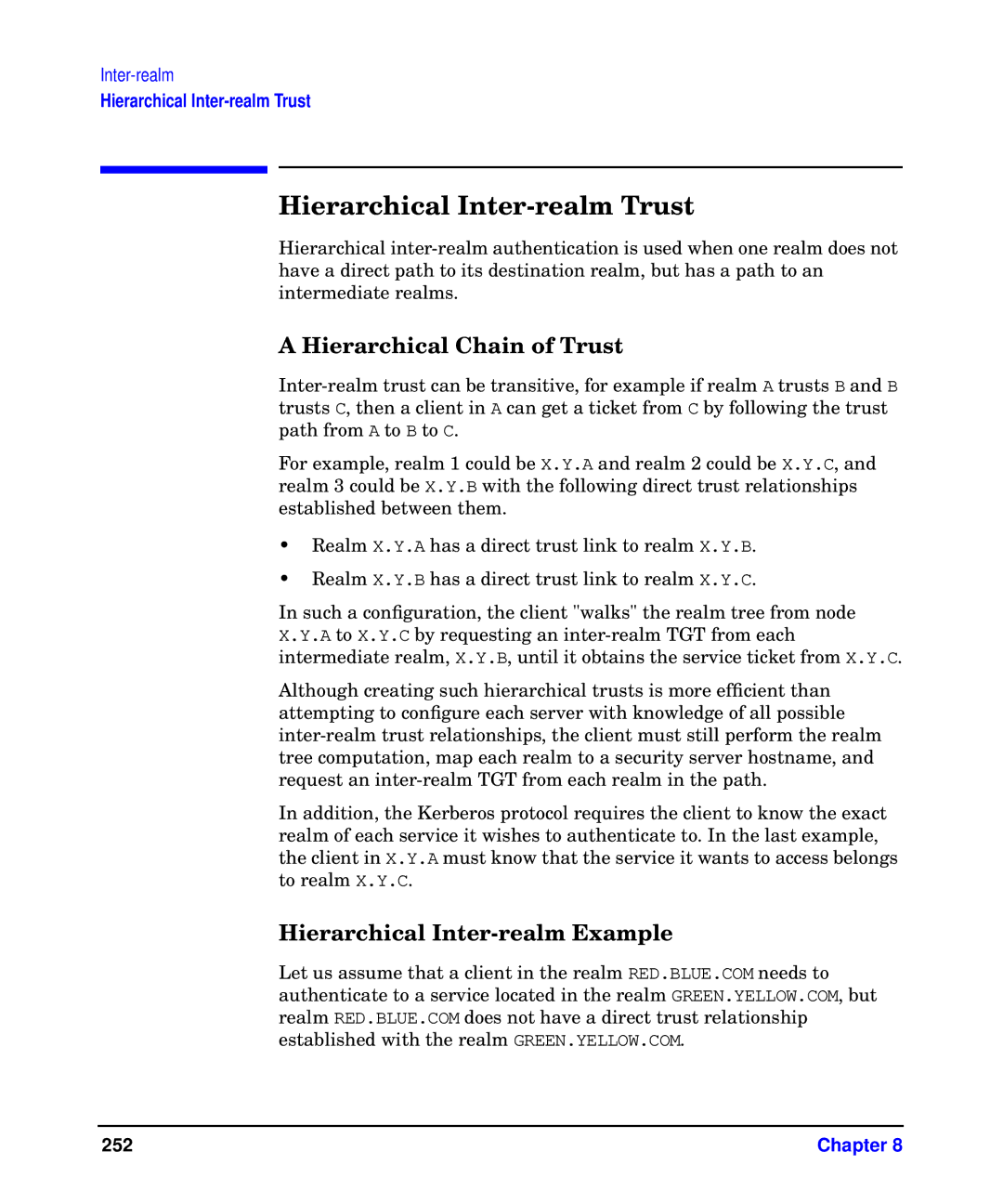
Inter-realm
Hierarchical
Hierarchical Inter-realm Trust
Hierarchical
A Hierarchical Chain of Trust
For example, realm 1 could be X.Y.A and realm 2 could be X.Y.C, and realm 3 could be X.Y.B with the following direct trust relationships established between them.
•Realm X.Y.A has a direct trust link to realm X.Y.B.
•Realm X.Y.B has a direct trust link to realm X.Y.C.
In such a configuration, the client "walks" the realm tree from node X.Y.A to X.Y.C by requesting an
Although creating such hierarchical trusts is more efficient than attempting to configure each server with knowledge of all possible
In addition, the Kerberos protocol requires the client to know the exact realm of each service it wishes to authenticate to. In the last example, the client in X.Y.A must know that the service it wants to access belongs to realm X.Y.C.
Hierarchical Inter-realm Example
Let us assume that a client in the realm RED.BLUE.COM needs to authenticate to a service located in the realm GREEN.YELLOW.COM, but realm RED.BLUE.COM does not have a direct trust relationship established with the realm GREEN.YELLOW.COM.
252 | Chapter 8 |
